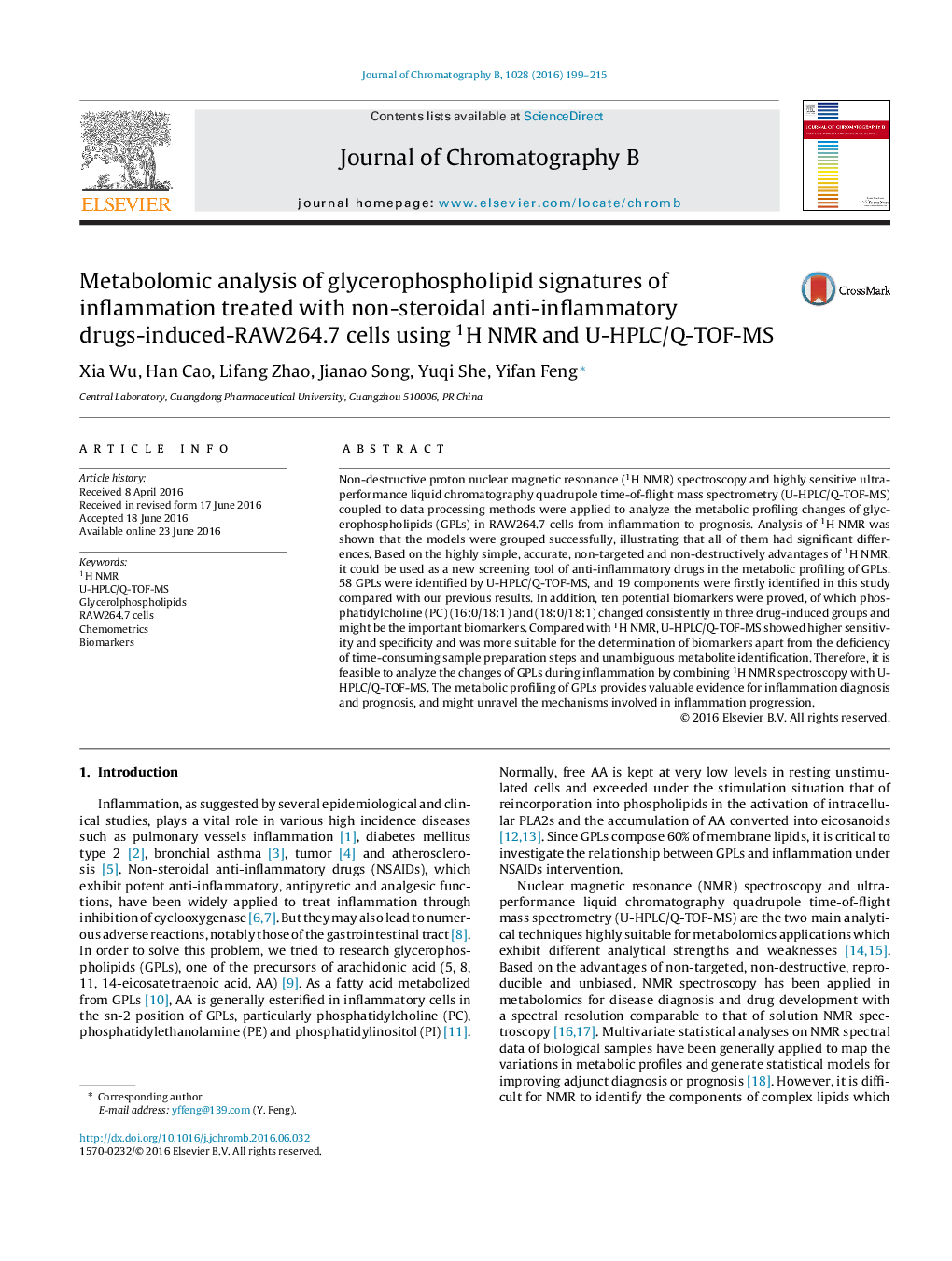| Article ID | Journal | Published Year | Pages | File Type |
|---|---|---|---|---|
| 7615990 | Journal of Chromatography B | 2016 | 17 Pages |
Abstract
Non-destructive proton nuclear magnetic resonance (1H NMR) spectroscopy and highly sensitive ultra-performance liquid chromatography quadrupole time-of-flight mass spectrometry (U-HPLC/Q-TOF-MS) coupled to data processing methods were applied to analyze the metabolic profiling changes of glycerophospholipids (GPLs) in RAW264.7 cells from inflammation to prognosis. Analysis of 1H NMR was shown that the models were grouped successfully, illustrating that all of them had significant differences. Based on the highly simple, accurate, non-targeted and non-destructively advantages of 1H NMR, it could be used as a new screening tool of anti-inflammatory drugs in the metabolic profiling of GPLs. 58 GPLs were identified by U-HPLC/Q-TOF-MS, and 19 components were firstly identified in this study compared with our previous results. In addition, ten potential biomarkers were proved, of which phosphatidylcholine (PC) (16:0/18:1) and (18:0/18:1) changed consistently in three drug-induced groups and might be the important biomarkers. Compared with 1H NMR, U-HPLC/Q-TOF-MS showed higher sensitivity and specificity and was more suitable for the determination of biomarkers apart from the deficiency of time-consuming sample preparation steps and unambiguous metabolite identification. Therefore, it is feasible to analyze the changes of GPLs during inflammation by combining 1H NMR spectroscopy with U-HPLC/Q-TOF-MS. The metabolic profiling of GPLs provides valuable evidence for inflammation diagnosis and prognosis, and might unravel the mechanisms involved in inflammation progression.
Related Topics
Physical Sciences and Engineering
Chemistry
Analytical Chemistry
Authors
Xia Wu, Han Cao, Lifang Zhao, Jianao Song, Yuqi She, Yifan Feng,
